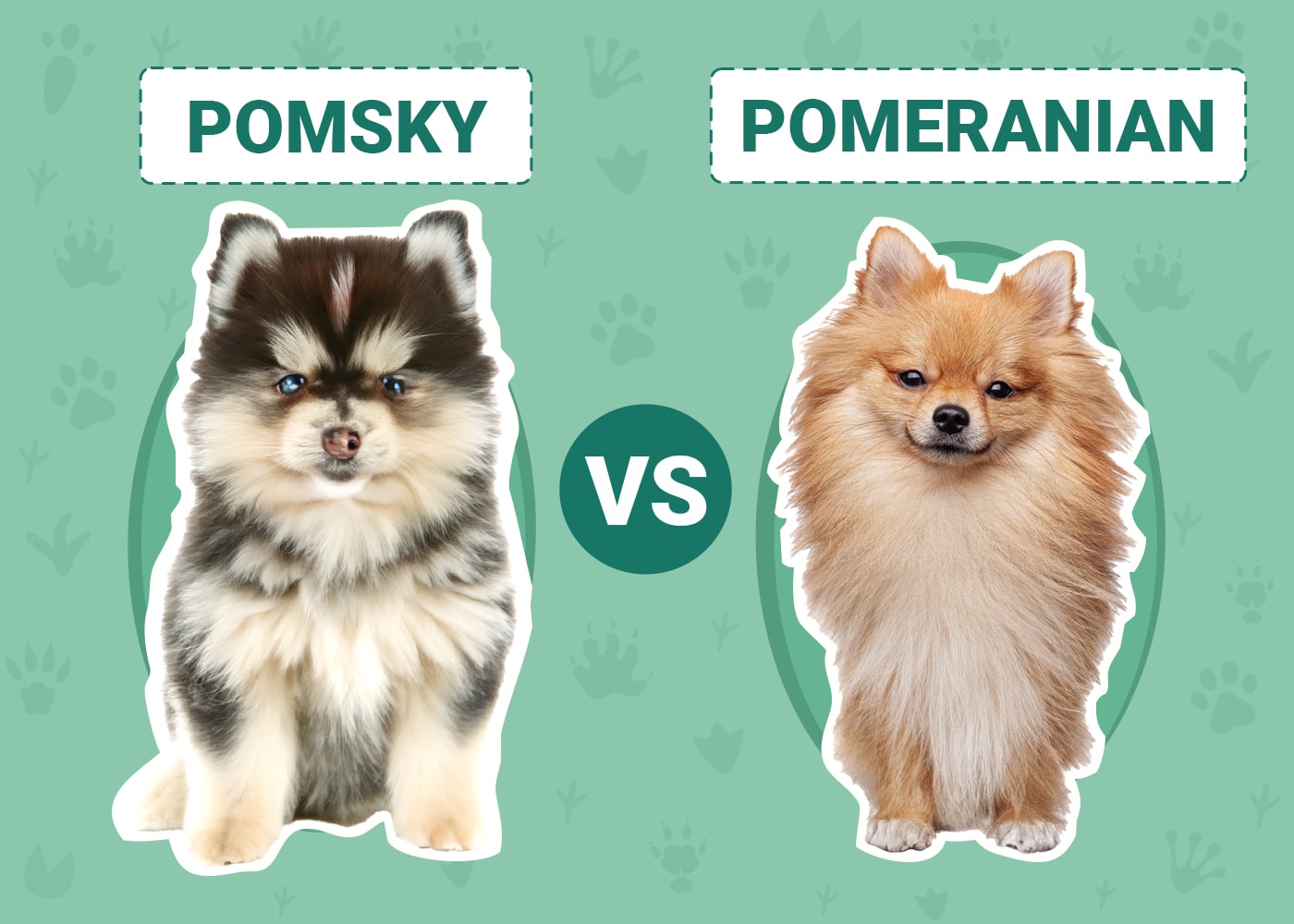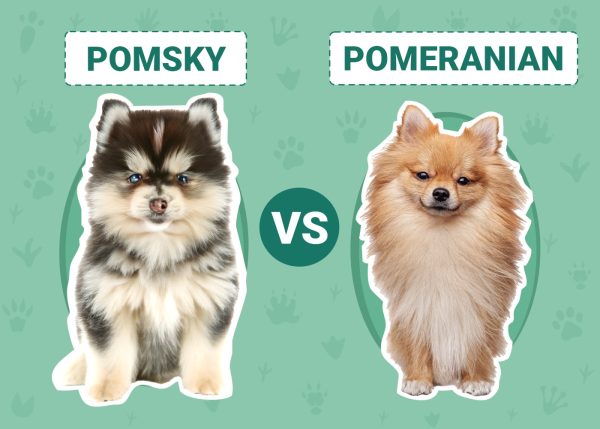Click to Skip Ahead
The Pomsky and Pomeranian are both lovable, cute dogs. However, the Pomsky has a Siberian Husky parent, which makes this crossbreed a bit different than the purebred Pomeranian. In order to determine which breed to choose as a pet for your household, you need to know about things like their personality, their specific care needs, and how well they get along with kids, other animals, and in social settings. So, we have put together an overview of each breed so you can get an idea of what to expect before deciding which might be the right pet choice for you and your family.
Visual Differences

At a Glance
- Average height (adult): 10–15 inches
- Average weight (adult): 20–30 pounds
- Lifespan: 13–15 years
- Exercise: 1+ hours a day
- Grooming needs: Moderate
- Family-friendly: Yes
- Other pet-friendly: Sometimes
- Trainability: Moderate to hard
- Average height (adult): 8–11 inches
- Average weight (adult): 3–7 pounds
- Lifespan: 12–16 years
- Exercise: 30+ minutes a day
- Grooming needs: Moderate
- Family-friendly: Yes
- Other pet-friendly: Often
- Trainability: Easy
Pomsky Overview
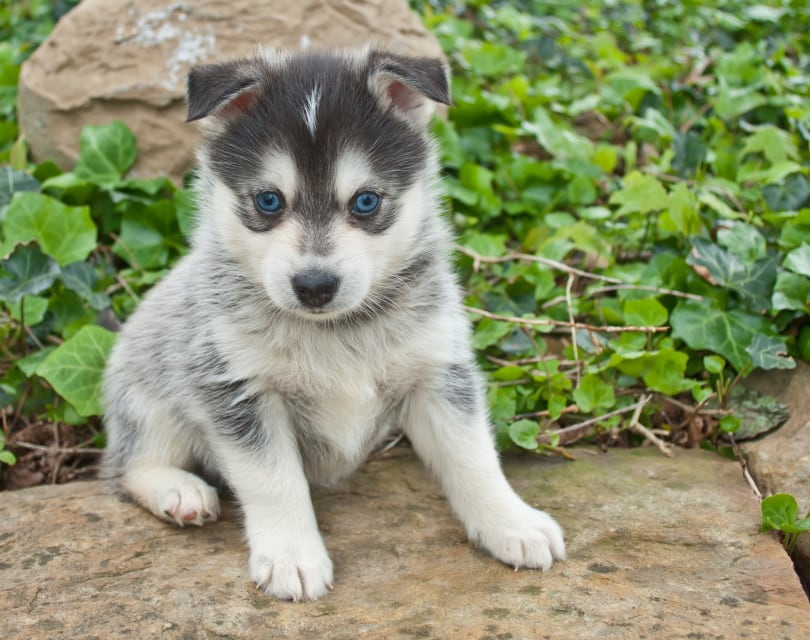
The exact history of the Pomsky is not known, but we do know that they started appearing on the scene in or around 2012. Using artificial insemination, these dogs were bred by a few family members, who kept at it until the dogs became popular sometime in 2014. As time went on, more and more people around the world decided to breed the Pomsky, and today, these dogs are as popular as they have ever been. Unfortunately, a few breeders have tried to pass off small Huskies as Pomskies, so prospective owners need to request a DNA test report for any Pomsky puppy that they are considering taking home.
Personality / Character
The Pomsky takes on the traits of both their Pomeranian and Siberian Husky parents. Therefore, they are typically smart, independent, confident, and sociable with their human companions. These dogs are playful and loving and tend to be protective of their territory, making them great watchdogs. Pomskies do have a stubborn side that can get them in trouble when it comes to behaving at home and in social situations.
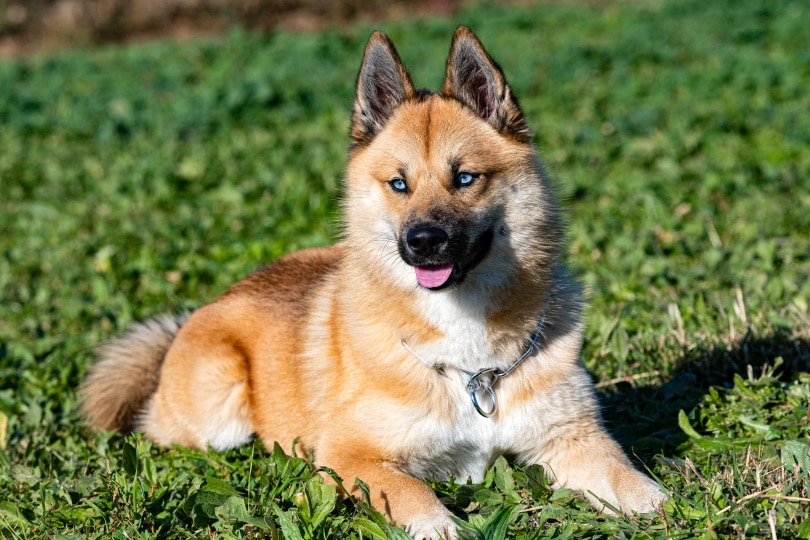
Training
Due to this crossbreed’s stubborn side, it can be tough to train them unless you’re experienced or working with a professional, though it’s not impossible. The Pomsky can be taught all the basic obedience skills with plenty of patience and commitment on your part. Having a professional work with you and your dog for a few weeks can be helpful. Alternatively, you can use training videos and books. Having plenty of treats on hand for praising never hurts either!
Exercise
The Pomsky has plenty of energy, so they need at least 1 hour of exercise each day to stay happy and healthy throughout their life. Most of their exercise should come in the form of brisk walks split up into two sessions each day. Other forms of exercise that they tend to enjoy include playtime at the dog park, trips to the beach, hikes in the woods, and games in the fenced backyard. Indoor exercise is acceptable when it’s raining outside. Games like hide-and-seek, training sessions, and puzzle toys are all great options to consider.
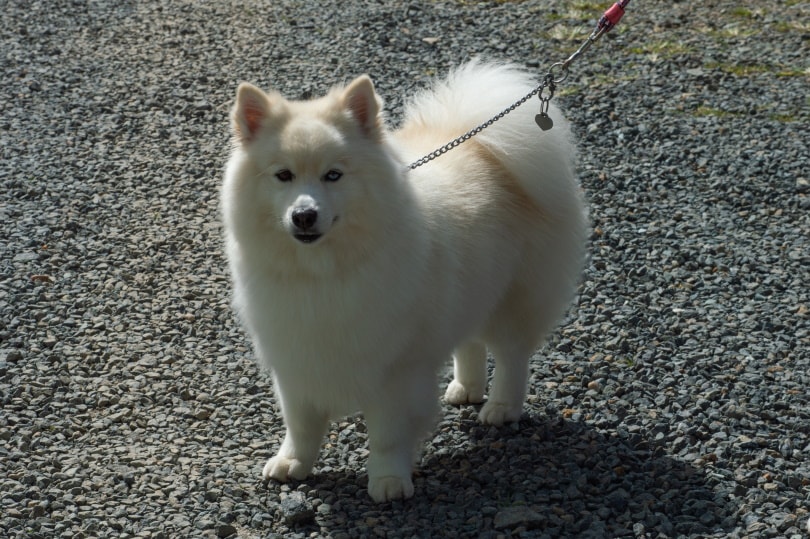
Health Conditions
There are no known health conditions specific to the Pomsky, but there are certain conditions that they may be susceptible to due to their heritage. These are the same ones that their Pomeranian and Husky parents are susceptible to:
- Hip dysplasia
- Eye defects
- Hypothyroidism
- Luxating patella
- Collapsing trachea
- Hair loss syndrome
It’s important to schedule regular checkups so these conditions can be caught early if they do start developing. This way, treatments can begin, and there is less of a chance that serious problems will arise from the conditions.
Suitable for:
The Pomsky is suitable for experienced dog owners who have the time and energy for daily walks and regular training sessions. These dogs can live in house or apartment settings as long as they can get outside for potty time and exercise multiple times a day. They tend to get along with kids but can be snappy with young children, so they must be supervised during playtime interactions.
Pomeranian Overview
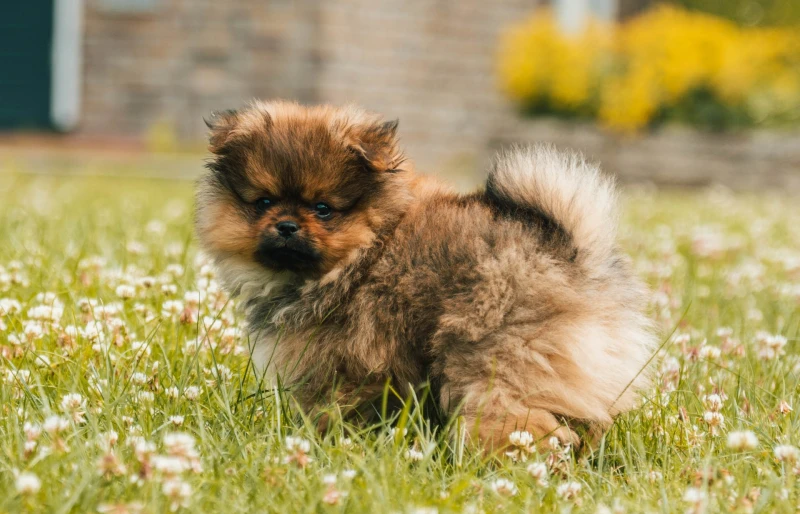
The Pomeranian is a descendant of the Spitz breed that lived in the Arctic regions of Iceland. The Spitz was a large dog and bred for working tasks such as sled pulling and farm guarding. They were eventually imported into Europe, specifically a place called Pomerania. From there, the dogs were bred with other breeds until the Pomeranian as we know it today was developed. Pomeranians are considered the Spitz family’s smallest members.
Personality / Character
Pomeranians are typically alert, playful, and highly intelligent. They enjoy spending time with adults and children alike, and they love goofing around. These dogs can be finicky, though, and many don’t enjoy getting dirty while spending time outdoors. However, they do like to play outside in the grass. These dogs are usually happy-go-lucky and can be patient when necessary. One of the Pomeranian’s favorite things to do is cuddle up in a human companion’s lap for a nice nap.

Training
The Pomeranian doesn’t have a stubborn side like the Pomsky tends to have. Therefore, they tend to be easy to train in both obedience and agility. Even inexperienced trainers should be able to teach commands such as “come,” “sit,” and “stay.” Daily practice helps ensure long-term results that help keep this dog out of trouble. Pomeranians typically respond well to clickers and treats during training sessions.
Exercise
Pomeranians do need daily exercise to stay healthy, but their smaller stature means they don’t need as much as the Pomsky does. About 30 minutes of exercise each day should suffice and keep the Pomeranian feeling satisfied. These dogs like brisk walks, hikes, and swimming at the beach or in a pool. Spending time on the agility course is also an excellent form of exercise for these dogs.
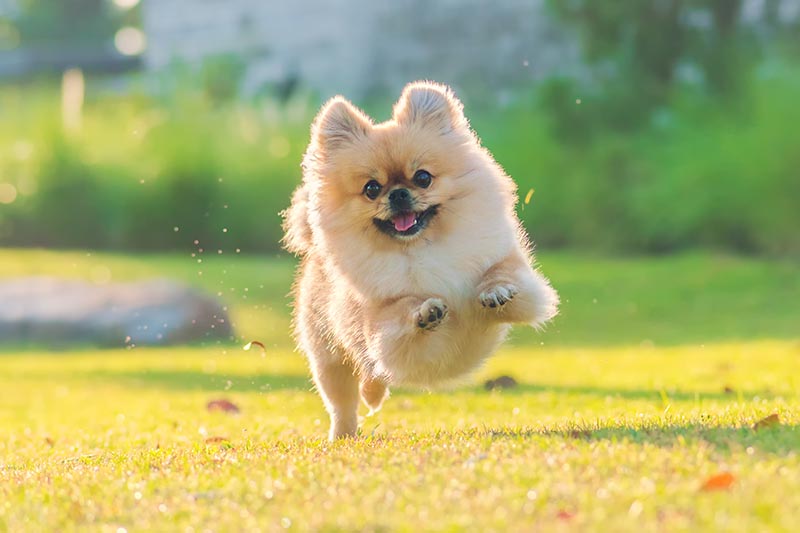
Health Conditions
The Pomeranian is usually a healthy breed of dog overall, though there are certain health conditions that the breed is susceptible to and that prospective owners should be aware of. These may be more prevalent in Pomeranians that are poorly bred:
- Luxating patella
- Collapsed trachea
- Hypothyroidism
- Congestive heart failure
- Seizures
- Alopecia x
All Pomeranians should be monitored by a veterinarian via regular health checkups to help ensure that problems get caught and treated early.
Suitable for:
Pomeranians are suitable for families of all shapes and sizes, singles, and even seniors who need company and companionship at home. They can live in either apartments or houses, and they don’t require much outdoor time, just enough to exercise and go potty. These are also great dogs for those who are interested in raising a canine for agility competitions.
Which Breed Is Right for You?
Either dog can make a great pet, but your lifestyle and household environment should be taken into account when deciding whether the Pomsky or the Pomeranian is the right fit for your family. The Pomsky needs more daily exercise than the Pomeranian does, so they are ideal for active families that get outside frequently. Pomeranians are needier, so they are better for those who like to spend time at home.
Featured Image Credit: Top – Leoniek van der Vliet, Shutterstock | Bottom – ignartonosbg, Pixabay

